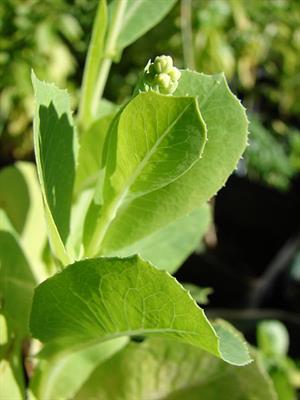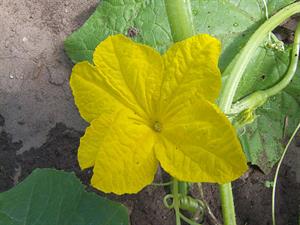
PUMPA - SMART LEARNING
எங்கள் ஆசிரியர்களுடன் 1-ஆன்-1 ஆலோசனை நேரத்தைப் பெறுங்கள். டாப்பர் ஆவதற்கு நாங்கள் பயிற்சி அளிப்போம்
Book Free DemoWhen compared to the other plant hormones gibberellins are the most abundantly found ones. In 1926 it Kurosawa observed Bakanae disease or foolish seedling disease in rice crops. This disease involves the internodal elongation in rice and was caused by fungus Gibberella fujikuroi.

Gibberella fujikuroi
The active substance found in this fungus was known as Gibberellic acid.

Gibberellic acid
Physiological effects of gibberellins:
- Usage of gibberellins on plants stimulates tremendous elongation of internodes . This is widely seen in corn and pea plants.
- When rosette plants are treated with gibberellins sudden elongation of shoots with subsequent flowering is stimulated. This is known as bolting.

Bolting observed in lettuce plants
- Gibberellins induce the production of male flowers in monoecious plants such as cucurbits.

Male flowers of cucurbits
- These hormones break the seed dormancy of potato tubers.
- When compared to auxins, gibberellins are efficient in inducing the formation of parthenocarpic fruits.

Seedless tomato
Reference:
https://en.wikipedia.org/wiki/Gibberella_fujikuroi#/media/File:Gibberella_fujikuroi.jpg
https://commons.wikimedia.org/wiki/File:Gibberellic_acid.svg
https://commons.wikimedia.org/wiki/File:Starr_081031-0394_Lactuca_sativa.jpg
https://commons.wikimedia.org/wiki/File:Cucumis_sativus_cucumber_male_flower,_komkommer_mannelijke_bloem_(2).jpg
https://www.flickr.com/photos/astridula/2545119590